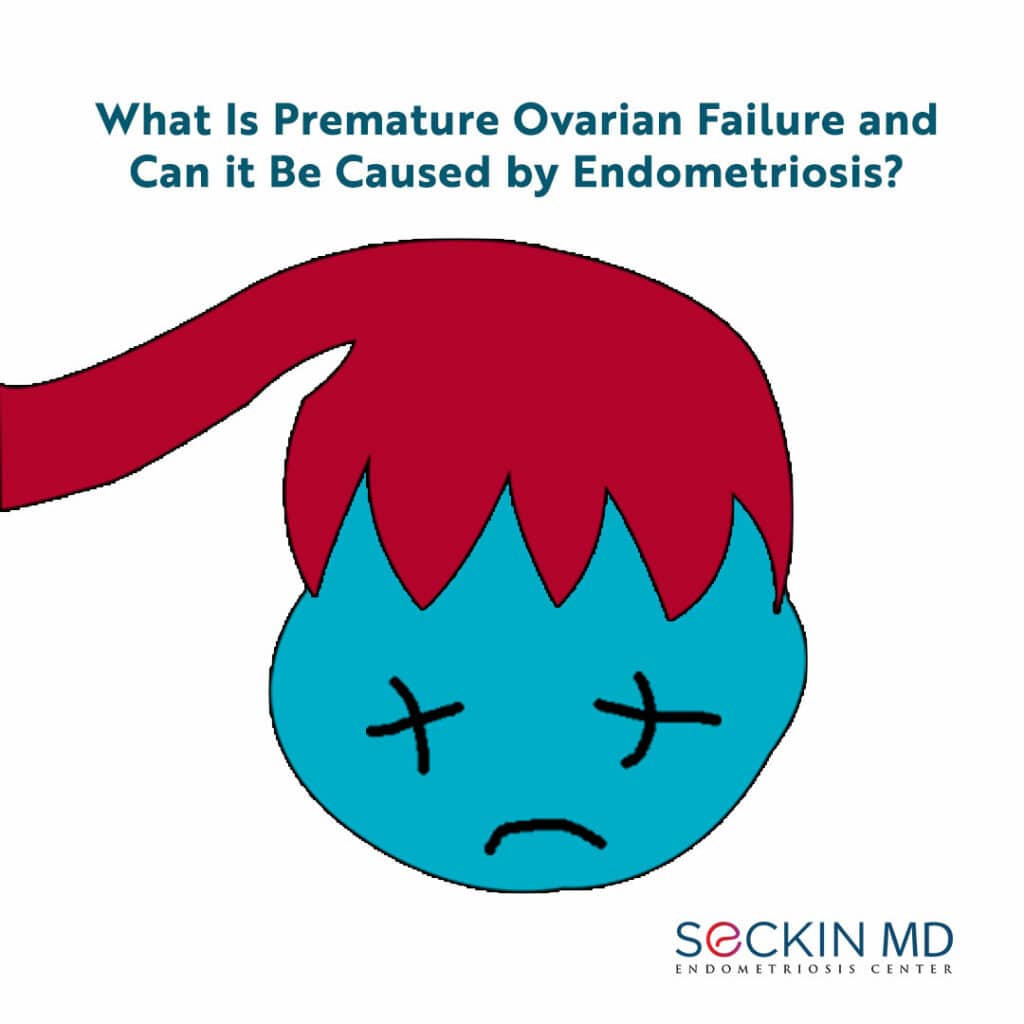Premature Ovarian Failure and Endometriosis

Premature ovarian failure (POF), also known as primary ovarian insufficiency (POI), refers to the cessation of ovarian function in women before age 40. In this case, the transition to menopause begins earlier than age 40. The condition is characterized by irregular egg release, low estrogen production, and overall reduced fertility.
Is it the same as premature menopause?
No. In premature menopause, there is complete cessation of egg production and periods before age 40 resulting in infertility. In the case of POF/POI, there is still occasional menstruation and also a chance of becoming pregnant, although both are difficult to predict.
What causes premature ovarian failure?
The exact cause of premature ovarian failure/primary ovarian insufficiency is not fully clear. However, there are several factors that can lead to the condition. These include:
- low follicle count
- autoimmune diseases
- genetic disorders such as fragile X syndrome
- chemotherapy or radiation therapy
- endometriosis
Apart from the above factors family history and ovarian surgery are possible risk factors that increase the risk of developing the condition.
What are the symptoms?
Symptoms of ovarian insufficiency include irregular periods, night sweats, hot flashes, decreased sex drive, pain during intercourse, vaginal dryness, irritability, and poor concentration.
The decreased levels of estrogen in the body can also lead to other complications. These may include dry eye syndrome, heart disease due to atherosclerosis, hypothyroidism, osteoporosis, anxiety, and depression.
How do doctors diagnose premature ovarian failure?
Doctors diagnose premature ovarian failure/ovarian insufficiency based on a physical exam and medical history. Your healthcare provider may recommend blood tests to assess your hormone levels and any chromosomal abnormalities, and a pelvic ultrasound to check the condition of your ovaries.
How does endometriosis affect the ovaries?
One of the causes of ovarian insufficiency can be damage to the ovaries due to endometriosis. In endometriosis, endometrium-like tissue starts growing in areas outside the uterus. When it affects the ovaries, it results in the formation of ovarian endometrioma, also known as chocolate cysts. About 30-40% of women diagnosed with endometriosis have an ovarian endometrioma.
Ovarian endometriomas can alter the structure and function of ovaries and lead to low ovarian reserves as well as ovarian insufficiency.
Endometriosis can also affect the quality of the eggs released from the ovaries. Research has shown that eggs retrieved from women with endometriosis are more likely to fail in in vitro fertilization (IVF) than those retrieved from women without the disease.
How about treatment?
Repeated surgery to treat ovarian endometriosis can also lead to premature ovarian failure. However, when performed by a skilled laparoscopic surgeon, ovarian endometriosis can be effectively treated while preserving fertility and ovarian function.
Doctors at the Seckin Endometriosis Center (SEC) have decades of experience in performing complex laparoscopic procedures such as laparoscopic cystectomy and laparoscopic deep excision surgery. The process involves carefully removing the lining of the endometrioma cyst, ovarian reconstruction, and temporary ovarian suspension. We do not advocate the use of heat or electric coagulation to minimize the risk of ovarian function loss.
Have you been diagnosed with premature ovarian failure? How did it impact your life? Please share your story by leaving a comment on our post on Facebook or Instagram.
Get a Second Opinion
Our endometriosis specialists are dedicated to providing patients with expert care. Whether you have been diagnosed or are looking to find a doctor, they are ready to help.Our office is located on 872 Fifth Avenue New York, NY 10065.
You may call us at (646) 960-3080 or have your case reviewed by clicking here.